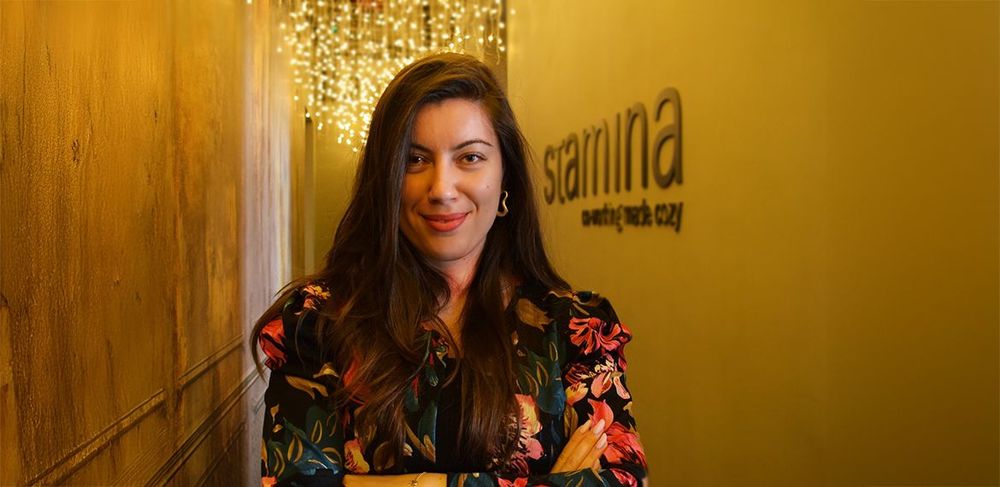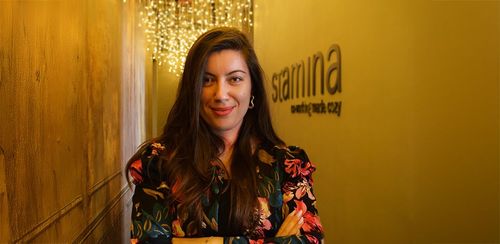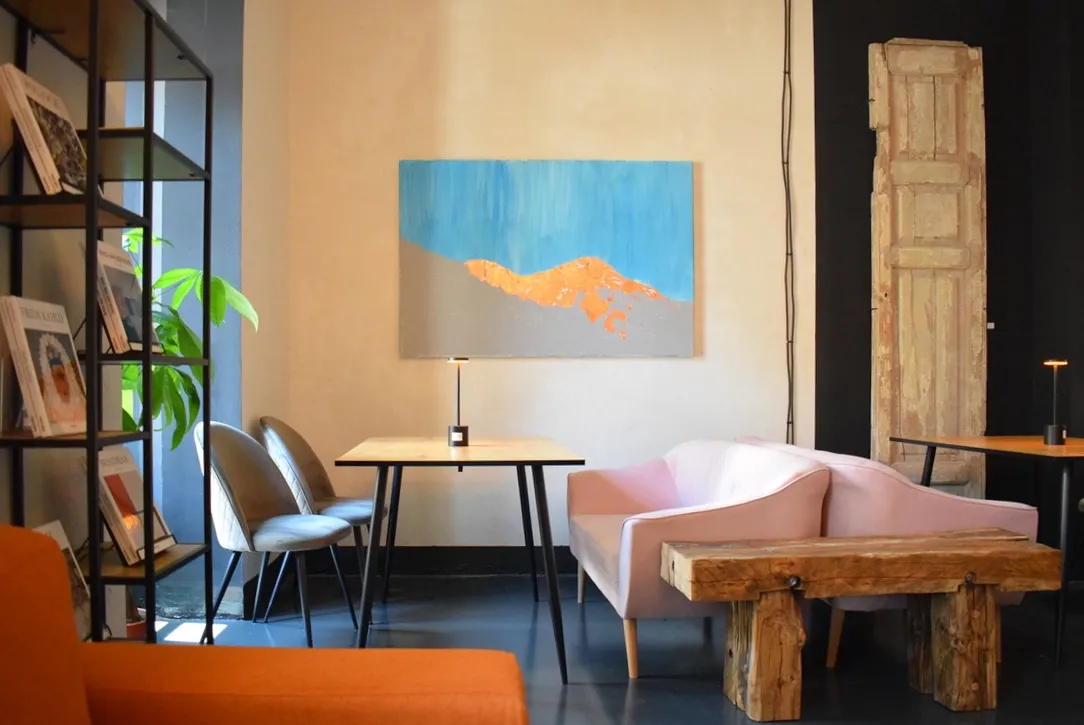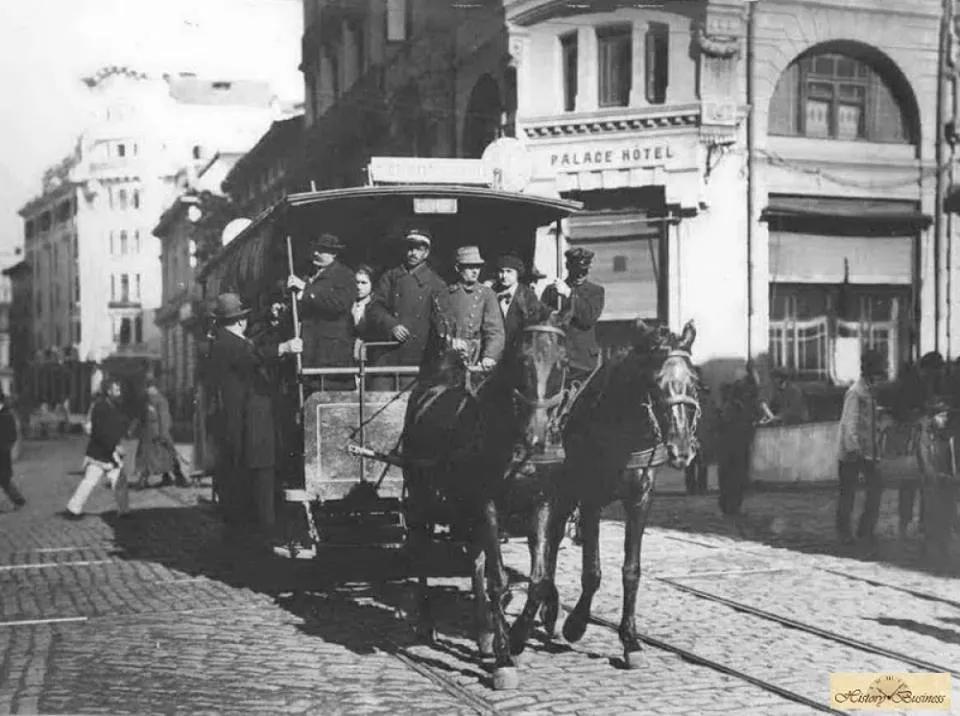

Mihaela Stîngă, Stamina: “I created the space as if people were coming to my home”
Share this article
Table of Contents
Stamina is a boutique coworking space, opened in 2024 in a beautiful area near Cișmigiu Park, and it quickly became a success among Pluria users: people love working there and keep coming back.
I talked with Mihaela, the founder of Stamina, to discover what she aimed to create and what inspired her in this project.
„I wanted to open a bookstore with a café because I couldn’t find the books I was looking for.”
What inspired you to create Stamina?
I started with the idea of creating a space where people could feel free, relaxed, and unjudged, without tension or pressure. I wanted to engage in an activity that would occupy my time and mind in a constructive way. I felt there was something I needed to do, something out there that had to be done by me.
Being an architect, I often worked with clients who brought their own ideas, but this time, I wanted to take on a project where it was just me, with no client, so I could do what I believed was best.
I began searching for a space for a bookstore with a café because whenever I was looking for certain books in Bucharest, I couldn’t find them. My idea was to rent a space on Calea Victoriei and create a mix of a café, bookstore, and flower shop.
Read also: The best Cafés in Bucharest to work remotely

From café to coworking
One evening, I was walking down the street with a friend, admiring the streets around Cișmigiu Park. I told her that I wanted to rent a ground-floor space on Calea Victoriei and create a mix of a café and bookstore. She suggested that I should do something where I could truly be myself, and that in a café, I wouldn’t fully be, since I don’t drink coffee and don’t know anything about it. She opened my mind and encouraged me to do something where I could completely resonate with the project.
I also realized that to work in this field, I’d always need someone by my side who knows more about coffee than I do, and I’d be dealing with perishable products in the food industry, which comes with a lot of risks and stress. So, in the end, I dropped the café idea.
I met a real estate agent who showed me a space and asked what I wanted to do. “I’m not exactly sure, something related to books.”
He said, “Why don’t you create a coworking space?” And I asked, “What? A coworking space?”
As an architect, I worked a lot from home and only went to the site when necessary. But when I thought about it, I realized how cool it would be to go to a space where I wasn’t alone anymore. Somewhere I could exchange ideas, meet people, change the atmosphere, look at a wall, at a painting. He planted the seed of the idea, and I made it blossom.
Read also: What is remote work. Understanding the future of employment
I asked a friend, who has since become my business partner, what he thought about the idea of a coworking space. Being more experienced in entrepreneurship, he told me, “Yes, it’s a good idea, do it. By the way, on Brezoianu Street, there are many cafés that don’t allow people with laptops—they have the no-laptops sign on the tables.” His encouragement and saying “Yes, do it!” gave me the green light to move forward.

Stamina is located in a beautiful building, what’s its history?
The building is over 100 years old, originally constructed in the late 1800s. In 1933, if I’m not mistaken, it was renovated and became the former Royal Palace Hotel.
It’s a building with crests at the top, bearing the initials HRP – it’s stunning. It took its current form in the 1930s, during Romania’s interwar period. I found pictures online with carriages and elegantly dressed people.

In recent years, the building had fallen into disrepair, with rain leaking inside and trees growing within. The workers who were there from the start of the renovation told me it was difficult to clean it up.
Read also: Top Coworking Spaces in Bogotá
As the work progressed, the space communicated to me what it needed. When you finish one wall, you look at it and feel that the other one needs to be done in a certain way, or that the ceiling should be different. Here, the space wants a door, there it doesn’t, or it tells you something is missing.
What kind of space did you want to create?
I wanted to create a space where people feel good. I observed people’s behavior, especially in the corporate world, and noticed something my brother, who has been working in corporations for 14-15 years, pointed out: the best relationships at work are formed outside, during smoke breaks, where titles, masks, and hierarchies disappear – it’s just you, not a title.
That’s where I started: I wanted to bring that relaxed “smoke break” atmosphere into the workspace, where we are not defined by titles, but as people. People should feel relaxed, without the stress of being overheard by a boss. We are all equal, human first and foremost. That’s what I aimed to create.
Beyond that, it was my desire to anchor myself to something. My anchor and home had always been my mother, who passed away when I was 17. After she left, I went through a drifting period, without roots, without feeling connected to anything.
It’s wonderful to feel free, to do whatever you want, anywhere in the world, but you don’t have an anchor, a place to return to, a safe space, a home.
So I said: if I don’t have a home, in the sense of feeling, not in terms of a building, I’ll build one. A place where I can pour my soul into, spread my personality across all the walls, a space for myself.
„I wanted it to feel like people were coming to my home.”
I want people to come to my place and feel free, without judgments, masks, positions, or titles. We meet, work, do projects, but first and foremost, we are just people in someone’s home.
That’s why the kitchen at Stamina looks like a home kitchen—we have a couch and a TV, making it feel more “homey.” I tried to combine the human, heartfelt aspect with something more radical and objective.
I analyzed the coworking market in Romania and abroad and noticed that, in Romania, most spaces are very serious: glass doors, ergonomic chairs, cold and impersonal. People are treated like numbers, and the space lacks personality.
So I said: my home concept fits perfectly. I’ll create a space that feels like people are coming to my home.
People responded really well to this idea.
Read also: Top Coworking Spaces in Mexico City for Focused Employees
What kind of people come to Stamina?
The space, through its architecture and location, attracts a certain type of people. All the clients who come here are creative, intelligent, hardworking, and authentic. Whether they’re having a coffee or working at a desk, they remain true to themselves. A lot of clients come by that I never imagined I’d meet, especially in Bucharest. They’re working on global projects in various fields.
Now, after creating Stamina and coming here every day, I can say it’s exactly what I wanted. I don’t see myself doing anything else. I could have done anything, anywhere. But I chose to stay here because I love it. It was a choice, not a compromise, and I feel my best doing this.
Read also: Top Coworking Spaces in São Paulo
How can you work from Stamina?
With Pluria, you have access to over 750 spaces in the network, across 15 countries, including Stamina in Bucharest. Your employer or team leader provides this benefit, and you can use it for free within the limits of your subscription.
You can quickly book any coworking space or work café directly through the Pluria app (lunch is included at cafés!). Whether you’re working individually or with your colleagues, you have the flexibility to choose.
Curious to learn more? Write to us at hello at pluria.co or quickly fill out the form in the app or on the website – we’re ready to respond right away!
Keep up to date with our most recent articles, events and all that Pluria has to offer you.
By subscribing to the newsletter you agree with the privacy policy.